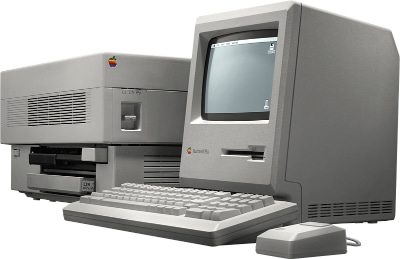What Is EPS?
When working with vector graphics, you may hear about Encapsulated PostScript (EPS) document format. If you aren’t very knowledgeable in the terminology of the design field, here is a brief explanation. EPS format files are used in design and vector graphics. A vector is an image that contains a mathematical equation that allows you to transform any picture into a huge one (e.g., as for a billboard) on your Mac while preserving the quality. Like other vector formats, EPS is a container of curves, text and bitmap images.

On your Mac screen, the vector image will look like a mass of screen pixels. In fact, all output devices have pixels─both the screen and the printer─however, if EPS is to be displayed, the content is displayed in maximum quality supported by the device.
Unlike the SVG file format, which we delve into further in this recent article, EPS cannot be easily edited by changing its code. The format, being based on code, differs from SVG by its foundation, which is PostScript versus XML in SVG format. Here’s what the EPS code looks like:
% Set RGB line color
1.0000 0.0000 1.0000 setrgbcolor
% Draw a crimson border around the page
newpath
36 47 moveto
576 47 lineto
576 746 lineto
36 746 lineto
36 47 lineto
stroke

EPS Editor on Mac
You should only open the EPS document using the software that is developed for vector graphics. If you open an EPS document on your Mac in a different app, you will have a really difficult time making changes to the document; you may not even be able to do so without compromising the quality. You can open and view EPS on the Mac with the built-in program Preview, but if you need to edit the file, look for the corresponding program.
There are apps capable of importing and editing EPS files. Some of them preserve the graphics as vectors while others convert to raster. Almost all vector editing apps are able to open EPS without losing its vector foundation. You can check out Amadine (a vector graphics program for Mac) to see how an EPS file is opened in an EPS editor for a Mac.
The History Behind EPS Creation
EPS was developed by Adobe in the late 1980s as an answer for a request for input (mostly printing) with the highest possible quality. The vector characteristic of storing data allowed it to scale the image for printing to the maximum size. Therefore, graphic programs such as Adobe Illustrator began to be based on vector images. Printers started appearing that work directly with PostScript. Another format option was used to display the PostScript file on the monitor screen: the vector file description stores a bitmap preview that can be quickly displayed on the screen. The format became the basis for DTP (desktop publishing) systems.

Today, the EPS format can no longer be called a cutting edge format. PDF (as a format for distributing documents) and SVG (as a format for outputting to the web and exchanging vector images among programs) are now increasingly used for storing vector images.
When to Use EPS Instead of JPEG?
Just imagine that you have an image you like, but you are not satisfied with its colors, and you want to make changes. In this case, you can adjust the colors you need by editing the EPS document on your device (computer with macOS or Windows, tablet or phone with mobile OS).
You have the opportunity to control the size of an image or adjust any specific graphic elements in it, thus quickly achieving whatever you need.
If, after editing the file, you need to attain the same quality as the image had previously, you can use EPS images as a vector format.
EPS Format Flaws
As with any vector file format, EPS has evolved throughout a long history. It’s not the most contemporary format, so it has a range of disadvantages, which need to be accounted for when working with this format.
Among the most problematic areas, the most common ones are described below:
- EPS does not support transparency (in this case, it’s better to use PDF).
- There are problems with security, because EPS allows storage in its scripts (and, hence, the possibility of malicious code).
- EPS code is readable by humans, but editing is not easy, as it is based on a programming language (it’s better to use SVG for manual editing).
- There’s no possibility for data encryption, if protection is required (PDF provides for encryption).